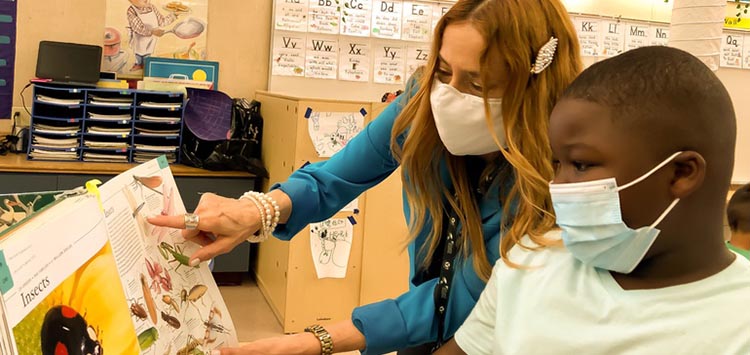
From K-12 Dive
By Shawna De La Rosa
July 14, 2021
Dive Brief:
In an effort to make up for learning loss accrued over a year of COVID-19 disruption, North Carolina’s Guilford County Schools formed small group tutoring sessions to fill the gap, according to The Hechinger Report.
Beginning in September 2020, the district recruited tutors from local colleges and universities, with a focus on engineering, math and education majors. Bringing in tutors from local historically Black colleges and universities also allowed them to connect more learners with tutors who looked like them.
Math was the primary subject Guilford’s program focused on, and the initial tutors were placed in Title I middle schools with priority given to English learners, students with disabilities, students with histories of chronic absenteeism, and those struggling with schoolwork. Initial diagnostic exams show early positive results, and students have also reported boosts in confidence levels.
Dive Insight:
Though tutoring is touted as a strong solution to reverse learning loss, it’s often distributed inequitably. For parents, it’s an expensive option and many can’t afford it. Weaving it into the school day takes away time from other subjects. Some stakeholders suggest implementing a permanent tutoring system by adding 30 minutes to the school day. It’s an expensive proposition however. Providing tutoring to the nation’s 20,000 lowest performing schools would cost about $10 billion a year.
Research indicates tutoring is one of the most effective ways to bring students up to speed, with one study finding frequent one-to-one tutoring increased the learning rates of students with lower performance. Weekly sessions, on the other hand, weren’t as effective.
Tutoring for younger students tends to be more effective for reading, according to National Bureau of Economic Research, though a different set of data in a working paper suggests tutoring is more beneficial to high school students in math. Researchers from NWEA, a nonprofit assessment company, found students’ math scores were 5 to 10 percentage points lower than would be expected upon their return to in-person learning.
High-dosage tutoring (HDT) embeds tutoring into the school day for all students. It’s personalized and has teacher-student ratios of less than three-to-one. This tutoring method is most effective when it’s focused on math. About 12 states have implemented in-school, small group tutoring with lessons closely aligned with the curriculum.
An AmeriCorps-staffed Minnesota Reading Corps program reportedly boosted higher-risk students’ reading levels by about a year. A study from the University of Chicago Education Lab found HDT can raise math grades, as well. That tutoring model consisted of daily 45-to-50-minute, two-to-one instruction sessions. The study found the program cost about $3,500 to $4,300 per student per year.
To be most effective, tutoring programs should focus on students’ strengths and include social-emotional supports, according to participants in a Learning Policy Institute and AASA webinar.
Photo: Permission granted by Layne Polakoff
Read this and other stories at K-12 Dive

